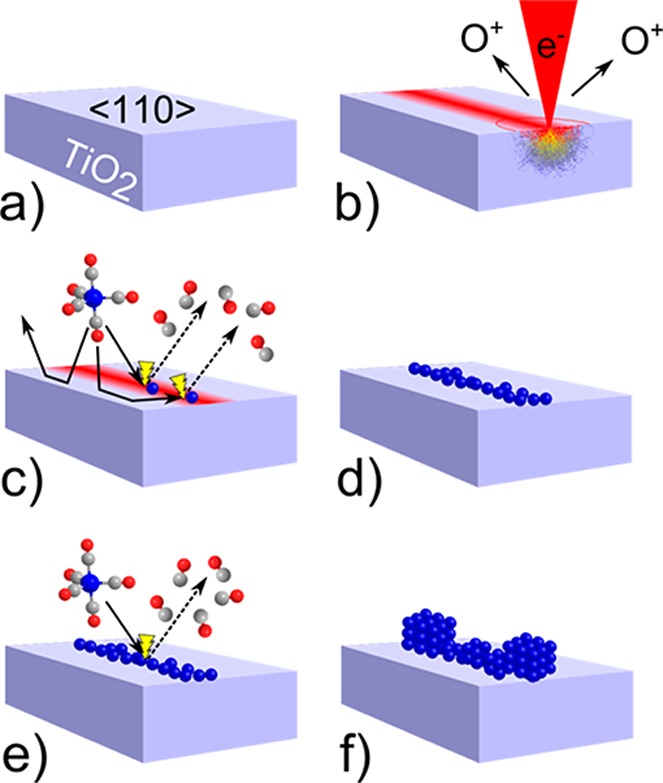Figure 1.

Electron beam-induced surface activation (EBISA) and the secondary growth process. The pristine (110) surface of a TiO2 (rutile) crystal (a) is exposed to a focused 15 keV electron beam (b), leading to the localized release of oxygen via electron-stimulated desorption processes. The activated surface mediates the dissociation of Fe(CO)5 molecules (c) into volatile CO molecules and a primary deposit of iron atoms (d). Further supply of Fe(CO)5 increases the deposit size via an autocatalytic decomposition reaction (e). Under the given reaction conditions, the growth process produces very pure, cubic iron crystallites (f).
